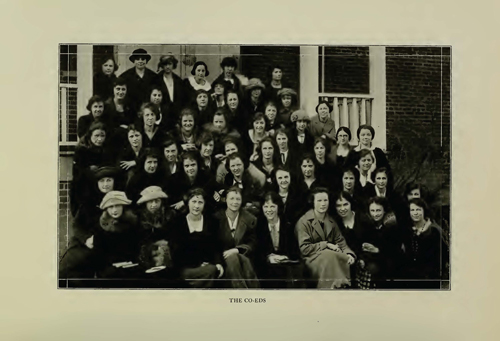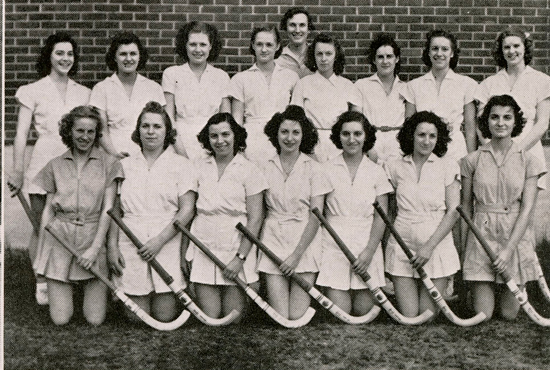Women’s Policies and the Stamp of Approval
Improper and Desirable: 1920s Rebellion
The 1920s saw a tremendous change for women nationally, including suffrage. As a result, more women began to raise their voices regarding differences in how they and their male counterparts were treated. University of Maryland women were no exception.
Adele Stamp, Dean of Women, and Albert Woods, President, regulated female student conduct. Female education in the 1920s focused on home economics and fierce loyalty to the University, but two students wanted to forge their own path.
Vivian Simpson and Virginia Flanagan, who were roommates, pushed back on the status quo of women's rules at the University. In 1923, both girls were denied readmittance to the dorms and later to the University. The reasons for this denial vary depending on the side of the story and include a sorority, a scandalous accusatory Washington Post article, insolent behavior, and rule-breaking. Both girls filed for a legal writ to be readmitted. Simpson won her appeal in March 1924, only to lose in December 1924 after President Woods appealed the decision. Simpson earned a law degree from George Washington University in 1927, crediting her decision to go to law school to this incident. "It was the best thing that ever happened to me," she declared to a local newspaper in 1978. "It prepared me to practice law. It toughened me. Before that, I was as innocent as a babe in arms." She went on to become the first female lawyer in Montgomery County and the first female Secretary of State for Maryland, serving from 1949 to 1951.

"The Co-Eds". 1922. Terra Mariae yearbook.
We Got Game
Women have been involved in athletic pursuits since they began enrolling at Maryland. The Women's Athletic Association was officially formed in 1924. In 1929, the first female athletic director, Virginia Peasley, was hired to manage serious and casual co-ed athletics. Early women's teams had great success in their competitions.
Even though they performed well, female athletes would not be under consideration to be given equal treatment at the University, at least from an administrative point of view, until the 1970s, when Title IX caused controversy at the University.

Athletic team. 1940. Terra Mariae yearbook.
Timeline
-
1916
Elizabeth Hook and Charlotte Vaux are the first women at Maryland State College of Agriculture to enroll.
-
1918
Gerneaux Hall opens to female students.
-
1920
Elizabeth Hook is the first female to graduate with a four-year degree in Entomology.
-
1922
Adele Stamp arrives at Maryland as the first Dean of Women.
-
March 1923
Vivian Simpson and Virginia Flanagan are refused readmittance to the dorms.
-
April 29, 1923
A Washington Post article charging University officials with participating in inappropriate behavior such as "petting parties" and unwanted advances on female students is published.
-
August 1923
Simpson and Flanagan are refused readmittance to the University.
-
October 1923
Simpson and Flanagan file writs to reenter the University.
-
1924
The Women's Athletic Association forms.
-
March 1924
Simpson wins her case in the City Court.
-
December 1924
The University (and President Woods) wins an appeal in the Maryland Court of Appeals, overturning the March ruling.

